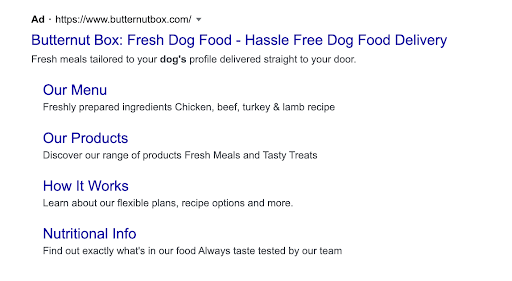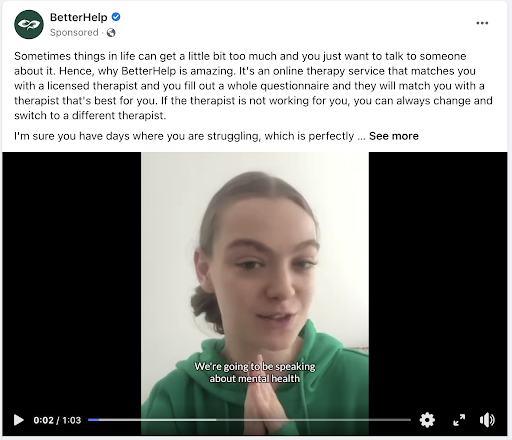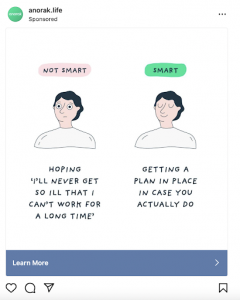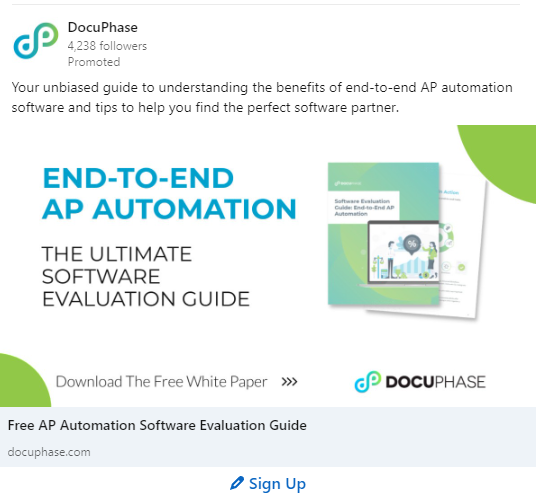What makes a successful PPC campaign? Here are 9 examples (+ best practices) to guide your next campaign.
Here, you’ll find:
- Definition of a PPC campaign
- Benefits of running a PPC ad campaign
- Real-world examples of successful PPC campaigns
- Expert tips on running a PPC campaign (based on real-life experience)
No pain, no gain. Makes just as much sense for the weightlifting world as it does digital marketing. Except in the latter, it’s more like no pay, no gain. If you don’t invest in your marketing (whether in time or money), you won’t see results. So those with the biggest budgets and consistent strategies see the most successful PPC campaigns.
One we see brands winning with is pay-per-click (PPC) advertising. It’s an excellent method to get near-immediate traffic to your website.
Wondering how you can do the same? Then check out these successful PPC campaigns and how to replicate their strategies.
What is a PPC campaign?
PPC stands for Pay-Per-Click and is a digital advertising model where you bid on specific keywords your audience may use to find your product or service. Each time a user clicks on your ad, you pay the CPC (cost per click) rate you agreed to (e.g., $4.08/click).
The most common form of PPC is search engine marketing (SEM), which features ads in search engine page results. However, you can also find PPC ads on other networks, such as social media, Amazon, YouTube, and websites in publisher ad networks.
Benefits of running PPC campaigns
What appeals to brands about PPC campaigns is the immediacy of the results. But what good is fast traffic if it’s not the right traffic?
Done right, your search ads will reach a highly targeted audience. PPC campaigns can be set up in minutes and often show results in a matter of hours or days rather than weeks or months.
Here are several other benefits:
- Ability to measure success: PPC campaigns are measurable and allow you to track your performance in real time. This allows you to adjust your budget, targeting, and content as needed.
- Cost control: Unlike traditional advertising, you only pay for clicks on your ads when someone takes action. In other words, no wasting money on ads that don’t yield results.
- Increased visibility: Your PPC ad appears at the top of the search engine page, so it’s more likely to be seen by users before organic listings.
The results you receive depend on how well you optimize your campaigns and the channels you use. For instance, a HubSpot survey shows 80% of brands use paid social media ads (26% say Facebook generates the best ROI).
But what works for one company may not work for yours, so learn your audience and test until you succeed.
Examples of successful PPC campaigns
What does a successful PPC campaign look like? It depends on your business goals and target audience (demographics, location, pain points). Some will feature visual ads to capture the attention of shoppers looking for their next pair of boots. While others may only use text to entice a searcher wanting to learn more about a product.
The stage of the buyers’ journey (awareness, consideration, or decision) will determine the type of ad you use and the channel.
So let’s review different pay-per-click ads brands use to drive traffic and conversions for their business.
Huel Vegan Protein: Adding a visual touch
If you’re in the U.K. and type “vegan protein” into Google, you’ll find Huel listed beneath Google Shop ads.
This search term shows an intent to either learn more about vegan protein or to make a purchase. You can tell because the search engine results pages (SERPs) show a mix of articles (e.g., What is Vegan Protein?) and Google shopping ecommerce ads.
The ad has an eye-catching image, ad copy discussing the product’s benefits, and site link ad extensions leading to other pages a searcher may be interested in. Then when you click the ad, it doesn’t go to a generic homepage. It goes to a landing page for its vegan protein powder with information and flavor options to select from:
Since they’re targeting the shopper’s intent, driving visitors directly to the product listing page is smart. It captures the interest immediately and will increase the likelihood of a conversion.
Butternut Box dog food: Capturing more real estate
Butternut Box also uses Google search campaigns as part of its PPC marketing strategy. But it chose a different ad format to drive attention to its other pages, like the main menu, other products, and nutritional details.
The ad’s layout makes it appear like a regular search result, increasing the odds of a click (because, you know, some people suffer from ad blindness).
Lumin skincare for men: Highlighting promotions
Yep. Men have skin issues like the rest of us. And when they run into problems with fine lines, wrinkles, and less-than-perfect skin, they head to Google to find products.
They may type something like: “men’s skincare set” to find a package deal.
Then this shows up:
Speaking of deals, Lumin uses the promotion extension to highlight a 50% off clearance sale. Nice move, since many guys (and folks shopping for their significant other) like to save big.
The ad copy is also appealing, playing on the challenges its audience is struggling with, and promises a solution. Short, sweet, and to the point — perfect for the male audience that wants to get in, find what they need, and get out.
If we had to guess, their target customer for this ad was a hardworking, masculine, money-focused man (notice the capitalization of “EARN” and the use of “invest”).
BetterHelp online therapy: Grasping attention with video
On social media, you need images to halt the endless scroller’s quest to reach the finish line (that never comes). Sure, including visuals in your ad works. But the only thing better is photo’s hot cousin: video.
By adding a video to your ads, you create a personal touch — especially if there’s a person from your brand (or a customer) displayed in the ad. Faces are powerful eye-catchers, and it’s likely why BetterHelp used a video of a young woman to draw in social media goers with its Facebook ad:
It’s a nice touch, especially since their offer is for mental health services — a major topic since the pandemic.
Not only does the ad feature a talking head, it also has closed captions for those who may want to “hear” what’s said without anyone noticing. The ad copy is also to the point, using a PAS model:
- Problem: Things in life get to be too much sometimes
- Agitate: And you just want someone to talk to about your issues (some don’t have anyone to talk to)
- Solution: Offers help from licensed therapists, which is matched to you based on a questionnaire
Also, notice the person in the video looks like a real person — not an influencer with pounds of makeup or using filters. She appears to be a college student, which is relatable to a young target audience.
Anorak life insurance: Playing on the concerns of breadwinners
Business owners. Solopreneurs. Heads of households working a full-time job. Individuals who are responsible for the well-being of a family have ongoing fears of a premature death that leaves loved ones in a financial bind.
So Anorak’s Instagram ad did an excellent job of pointing out these fears in a simple sketch drawing:
The visual is eye-catching and speaks to its core audience without a ton of copy. Short and sweet is always the way to go with digital ads because folks are busy, and that gives you only a few seconds to convince them to click.
EasyJet travel booking: Taking advantage of seasonal holidays
People are keen to open their wallets during the holidays, especially when planning a trip or vacation. This is why travel and lifestyle brands go all willy-nilly with holiday ads.
EasyJet chose to do the same by creating a seasonal PPC ad offering cheap holiday packages. It took a similar approach to Butternut Box with the site link extension to promote other offers on its site, including a summer sale, winter holiday packages, and savings for holiday travels:
Words like “cheap,” “deal,” “limited-time offer,” and “free delivery” are words you can place in your ad copy to get more attention and clicks. Just make sure the rest of the copy appeals to a particular audience, or you’ll waste a lot of money on irrelevant clicks.
We avoid this when conducting PPC management for clients by using our proprietary software, ConversionIQ. Our platform analyzes PPC campaigns and identifies your top-paying customers and the search queries they use to find you. This way, you can add these keywords to your campaigns to attract high-converting searchers.
Noom weight loss: Being specific with expectations
Too many brands are vague in their offer, saying things like — we’ll help you succeed (how exactly?)! Anytime you can get into the nitty-gritty of how your brand can help customers, then do it.
A great example of this in action is Noom’s PPC search engine ad:
Noom’s a weight loss company, but rather than just saying they’ll help you lose weight, they get specific:
“Hit your goals in 16 weeks.”
This strikes a chord with people struggling to lose weight and who are tired of trying fads that don’t work. Many weight loss products simply promise weight loss, but don’t promise when you’ll see results.
You can apply this concept to any industry. For example, if you’re a construction service, you can offer to complete building plans or renovations within three months. Of course, you want to be realistic and ensure you can hold your end of the bargain. Otherwise, you risk losing credibility (Google negative reviews can be brutal for local service businesses).
DocuPhase business automation: Offering a free resource
The business-to-business industry is unique — rarely will you get a company rep to see an ad, click it, and make a purchase. There’s a ton of red tape to receive approvals for business purchases.
So you design a high-value asset (aka lead magnet) to offer in exchange for their information (name, company, email, number). Then over time, you use an email campaign to nurture them into a sale.
This is the approach DocuPhase chose with its LinkedIn ad for an ultimate guide on software evaluation:
This works because it offers something of value to the customer — the guide — positioning its brand as an authority on the topic. Critical move because this is the exact software it sells, so it’ll likely highlight what makes its platform better than the others presented.
In this scenario, you’re not just tracking sales conversions — you’re looking at the number of “sign-ups.” It’s ideal to have an automated email campaign set up to follow up with the prospect over time, warming them up to a sales call.
MarketingProfs business resource: Building a subscriber list
Advertising for a brand that doesn’t “sell” products is a thing. Companies that focus on building their site as helpful resources will find a subscriber list is worth its weight in gold.
With a long list of active subscribers, you can sell sponsorships to other brands to promote their offerings in your emails. And if you offer a service, you can use informational content to get a foot in the door with prospects.
MarketingProfs is a business marketing resource that publishes content, newsletters, and reports companies find valuable. It also hosts events and offers consulting services.
So what better way to stay top of mind with prospects than to land in their inboxes weekly?
Rather than rely on organic traffic to a blog to grow its email list, it chose to use LinkedIn to build brand awareness and grow its subscriptions:
It emphasizes the newsletter is “FREE,” which is good because business newsletters aren’t always free. Then its unique “selling” proposition is that you’ll actually want to open the emails they send (because we all subscribed to content we scoff at and skip over).
What’s great about LinkedIn is that with the “Subscribe” CTA (call to action), users can sign up right on the platform. No need to leave the app or site, which increases the odds of a conversion.
Best practices for creating successful PPC campaigns
What makes successful PPC campaigns? Is it the ad platform you use? The offer? The copy? Your budget?
It’s a mix of all the above. There’s no one way to build a pay-per-click advertising campaign. But there are some best practices you can follow to increase the odds of success.
1. Align PPC campaign goals with company objectives
Successful PPC campaigns are all about objectives. No marketing campaign will win if it doesn’t help the company achieve its objectives. So, be sure you start every campaign with the end goal in mind. Otherwise, it’s easy to fall off track when you don’t have a clear understanding of the big picture.
It also puts you in the dark about which metrics to track. For example, PPC advertising isn’t successful because it has a lot of traffic and clicks, if your goal is to get email subscribers. In this case, you should be looking at the number of subscribers compared to the amount of traffic and clicks to see if your keywords are high-quality.
2. Optimize your website and landing pages
The content on your landing page is equally, if not more important than the copy in your ad. Not only must it engage and convert visitors — you must also optimize it for search engine traffic. Every ad receives an ad quality score, so using the same and similar keywords in your landing page and the ad is key to appearing higher in the SERPs.
Plus, it increases the odds of conversion if your ad and landing page are aligned in messaging. For example, we created custom landing pages for Wyndham, continuously testing the ad and landing page copy for consistency and optimal performance.
Here was the outcome:
- Increased lead volume three times over
- Increased conversion rate by 250%
- Decreased cost per lead by 45%
But what makes a good landing page?
- A killer headline
- Clean, attractive design, and enough white space
- Short, compelling, and convincing copy
- Clear, actionable CTA
- A user-friendly lead form if you’re collecting information
- Appropriate visual content – images and videos
- Superfast loading speed
- Social proof – testimonials
- Mobile-friendly
3. Select the right bidding strategy
You have two options for a bidding strategy: manual or automatic. This is where many brands get lost. Some opt for automation, thinking it’ll always select what’s best for your brand.
However, automation uses an algorithm to make these decisions, which means it relies on data to make choices. If you’re just starting your campaign, automation isn’t the best option because it lacks the data required to make sound decisions.
So we always recommend beginning with manual bidding for at least several months. But this requires understanding how PPC works to know how much to bid and which keywords to bid on. It takes consistency and testing to see what works.
When we worked on Swimsuits Direct’s paid search and Google Shopping campaign, we saw an 80% increase in return on ad spend (ROAS). And that’s because we implemented continuous bid management to account for seasonal changes that fluctuated product demand.
4. Successful PPC campaigns choose keywords wisely
Bidding on the wrong keywords is something you want to avoid at all costs in a PPC campaign. Getting it wrong and receiving no clicks is the best you could hope for. In reality, you may pick a high-volume keyword your target audience isn’t searching for, which means you’re paying for thousands of clicks that will never convert.
To show the importance of keyword research and selection, we have another example. We worked with Columbia Virtual Academy’s PPC campaign and heavily emphasized keywords with high intent, thanks to data from ConversionIQ.
There were many similar terms related to their program, like “online college courses,” so we selected “Exact” and “Phrase Match” relevant keywords to bring in the right traffic.
The result:
- Increased Google Ads conversions by 134% year over year
- Decreased cost per acquisition (CPA) by 51%
- Higher search click-through rate (CTR) by 45%
But it’s not just about creating ad groups with winning keywords. It’s also about finding the keywords that are losers and adding them to your negative keywords list, so your ads don’t appear in those results. It’s also critical to focus on long-tail keywords to reach a more specific audience.
The Takeaway
Successful PPC campaigns aren’t created from thin air. It requires planning, optimization, and continuous testing. Since there’s no one-size-fits-all solution for every business, you must do the legwork to understand your target personas and their needs.
From there, you can build a campaign that’s more likely to attract and convert your target customers. But let’s face it, many business owners lack time to build a PPC campaign from scratch, let alone manage it.
This is where HawkSEM comes in. If you want a partner to guide your PPC campaign from launch to the finish line — give us a call today.











